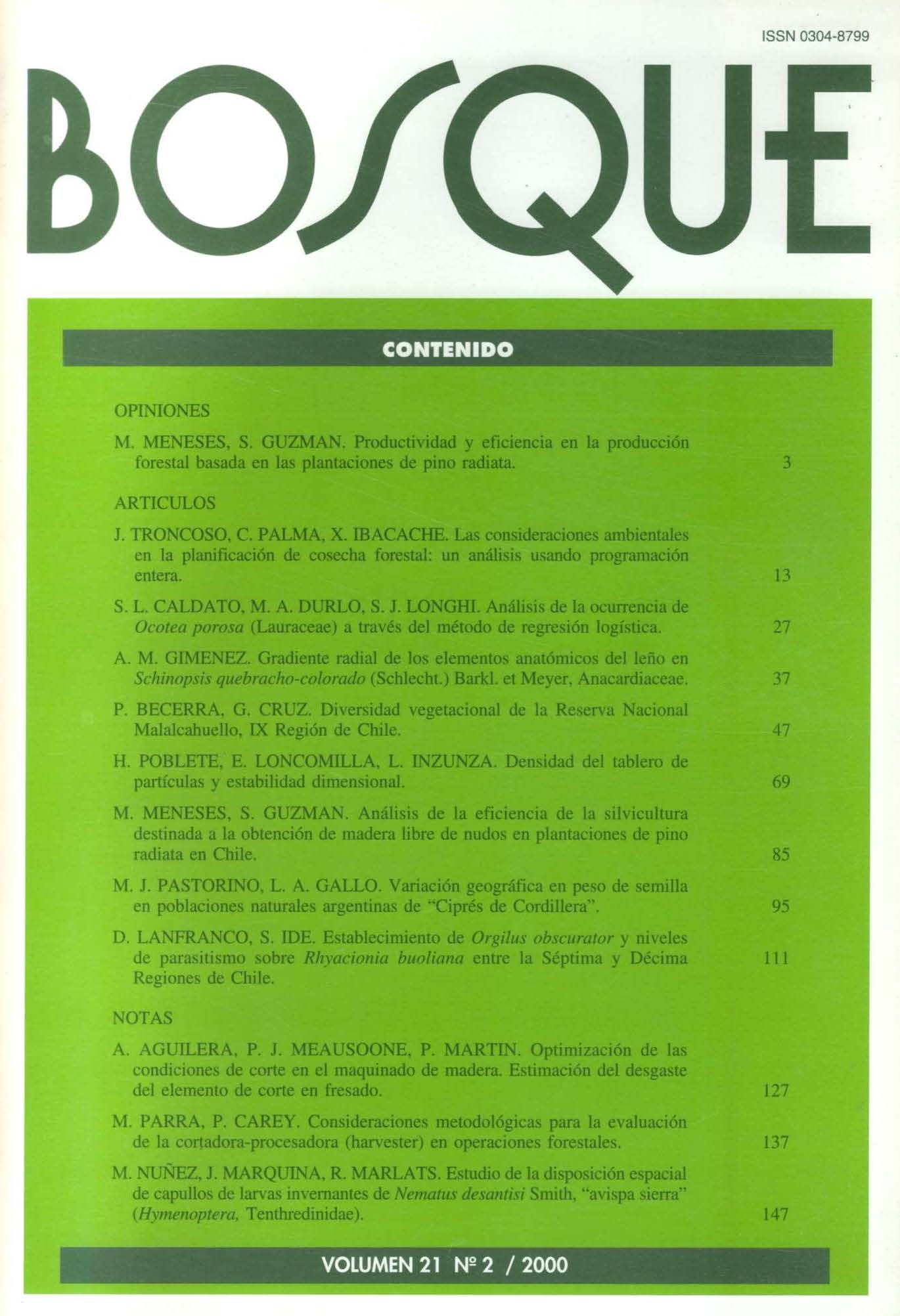Main Article Content
Dec 29, 2000
Abstract
Knowledge of the diversity and characteristics of phytosociological vegetation units of transitional regions between Mediterranean and temperate zones in Chile, particularly in the protected wild areas, is scarce. In this paper, the phytosociological units of the National Reserve "Malalcahuello", IXt h Region of Chile, are defined. The relative importance of elevation, exposition, and type of substrate for its formation is examined, along with a characterization of species and life form structure. Thirteen units were identified, which were formed as a consequence of elevation and substrate variation. The species richness varied between 21 (10%) and 58 (27.5%). The species similarities between units varied between 0% and 50.9%, and the life form diversity varied between units in terms of the number of species and coverage per life form. The variation of species and life form diversity between units suggests that the incorporation of this data in SNASPE (Sistema Nacional de Areas Silvestres Protegidas del Estado en Chile) will improve the knowledge of biodiversity of Chile.


